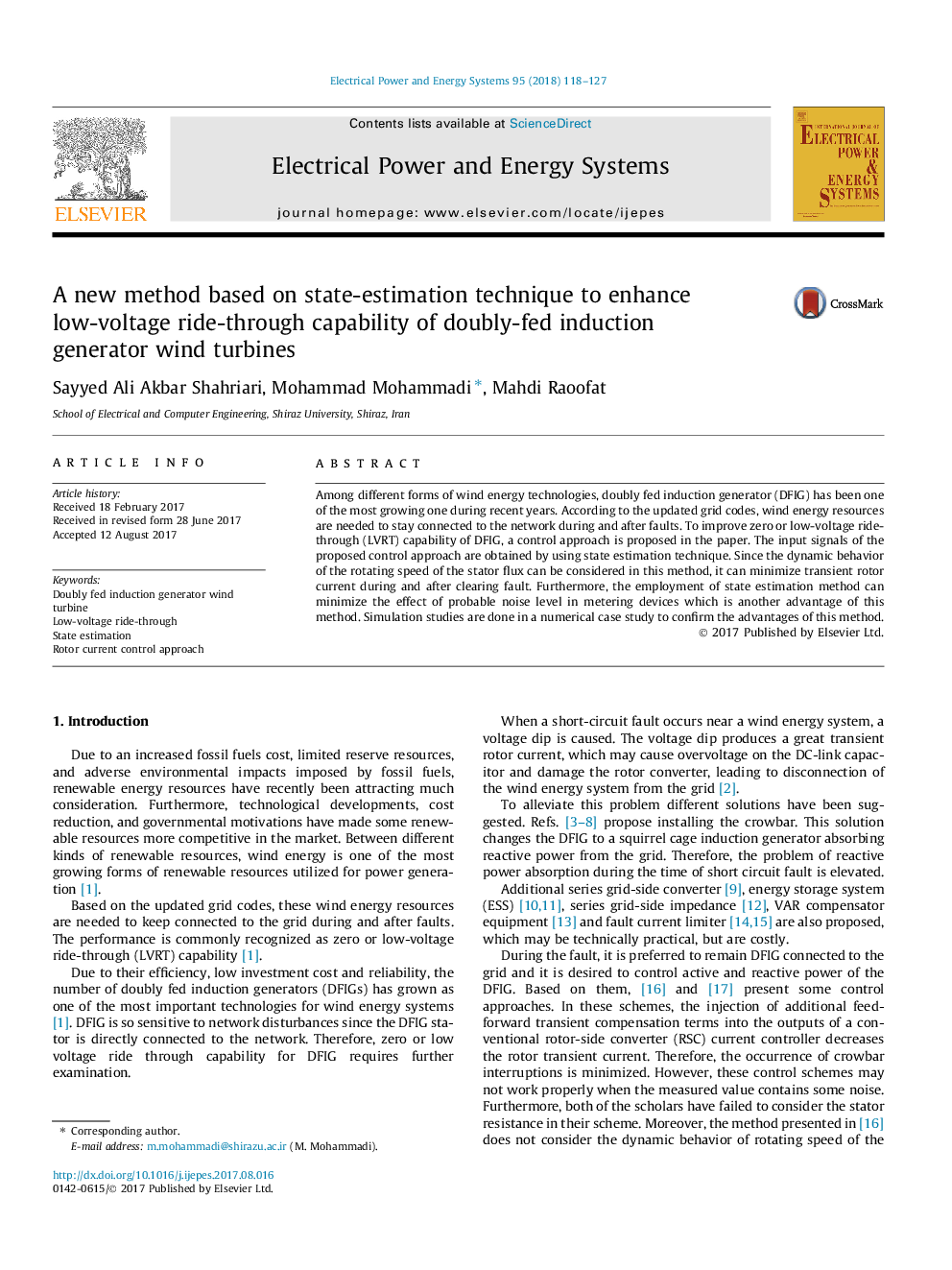| Article ID | Journal | Published Year | Pages | File Type |
|---|---|---|---|---|
| 4945417 | International Journal of Electrical Power & Energy Systems | 2018 | 10 Pages |
Abstract
Among different forms of wind energy technologies, doubly fed induction generator (DFIG) has been one of the most growing one during recent years. According to the updated grid codes, wind energy resources are needed to stay connected to the network during and after faults. To improve zero or low-voltage ride-through (LVRT) capability of DFIG, a control approach is proposed in the paper. The input signals of the proposed control approach are obtained by using state estimation technique. Since the dynamic behavior of the rotating speed of the stator flux can be considered in this method, it can minimize transient rotor current during and after clearing fault. Furthermore, the employment of state estimation method can minimize the effect of probable noise level in metering devices which is another advantage of this method. Simulation studies are done in a numerical case study to confirm the advantages of this method.
Related Topics
Physical Sciences and Engineering
Computer Science
Artificial Intelligence
Authors
Sayyed Ali Akbar Shahriari, Mohammad Mohammadi, Mahdi Raoofat,
